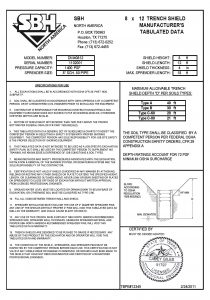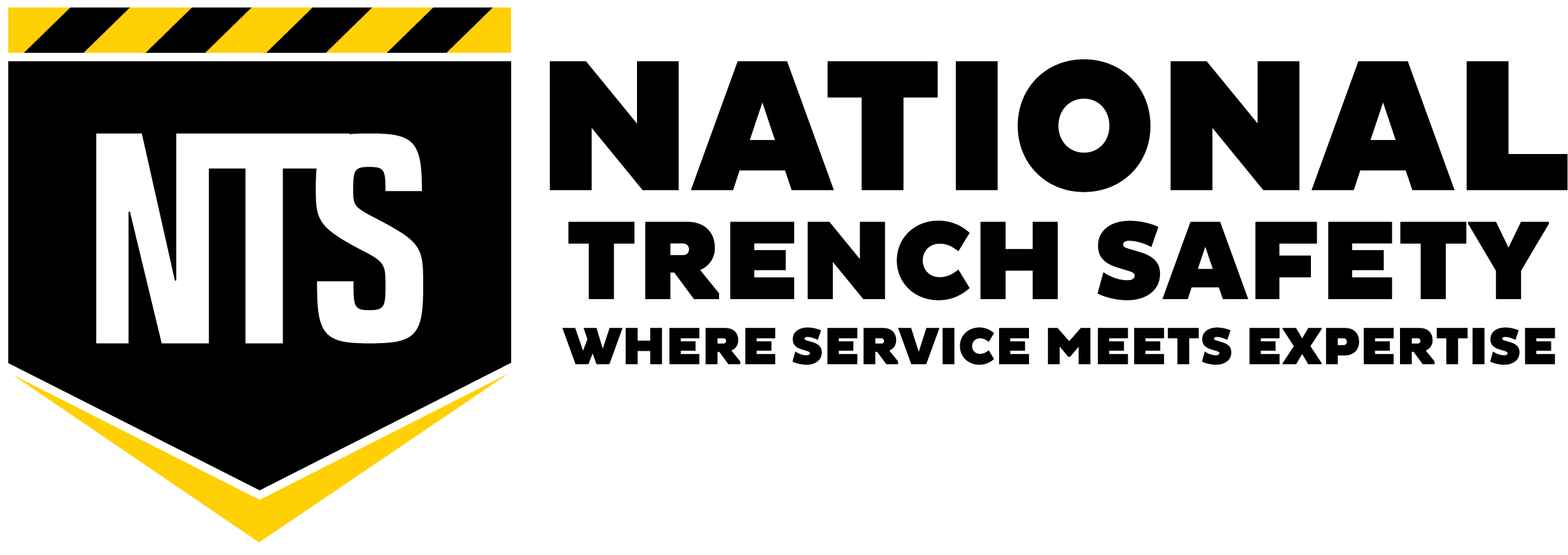Manufacturer’s Tabulated Data: What to Look for and Expect
This article will be the first of a three part series regarding manufacturer’s tabulated data.
According to the OSHA Subpart P Excavations standard, “tabulated data” means tables and charts approved by a registered professional engineer and used to design and construct a protective system. The purpose of this tabulated data for shoring equipment is then to provide the contractor and those involved in developing a plan to shore a  project with the necessary information to use the equipment in the context of the plan.
project with the necessary information to use the equipment in the context of the plan.
With excavation protective systems the following information is necessary and should be contained within a tabulated data sheet:
Physical Information
- A representation of what the equipment looks like, such as a photo or drawing
- Features and options related to the equipment, which may be specific to the type of equipment including adjustable and or hydraulic components as well as optional accessories
- Weight of the equipment so that the user may be able to determine how to safely handle the equipment
- The physical dimensions of the equipment (length, width and depth)
Structural Aspects
- Allowable loading of the equipment so that engineers may use the equipment in site specific shoring designs
- Allowable depth ratings by OSHA soil type
- Tables and charts used to determine element sizes and positioning within the trench
- Identification and capacity of structural elements that can vary with the system, such as spreaders and their allowable spans, hydraulic over-sleeve size and span, and allowable sheeting size and type
- An engineer’s stamp
Additional Information
- Notes and usage information that further explain the applicability and use of the equipment and or data
- Basis for determining the loading that will be imposed upon the shoring system (most often the basis is determining the soil in accordance with the OSHA Subpart P Appendix soils identification process)
Every aspect and element of the installed shoring system must be addressed in the tabulated data for the shoring system to be in accordance with the data. For example, if trench plates are placed at the ends of a shoring shield and the plates are not discussed in the tabulated data, the shoring is out of conformance. There may be extraneous cases, such as a ladder or handrail placed on a shoring box, that do not significantly impact the strength of the box that would not affect the warranty of the equipment, however, the user must consider the tabulated data when making these decisions.
Additionally, the tabulated data must be present at the jobsite so that the conformance of the shoring system can be checked at any point in time while the system is in use. For the those persons reviewing the tabulated data and observing the shoring installation in the field the tabulated data serves a very specific purpose, it allows them to determine if the shoring system has been properly selected and installed in accordance with the manufacturer’s requirements. If the installation does not conform to the manufacturer’s specifications, the user is potentially voiding the manufacturer’s warranty and could be assuming complete liability for the system.
Finally, the engineer’s stamp is one of the key pieces of information on any piece of tabulated data, as it indicates that the shoring has been constructed in accordance with accepted engineering standards for safe use within the guidelines of the tabulated data. The engineering stamp is primarily focused on structural capacity aspects of the product and not with intended use and handling of the product. Depending upon the equipment and or manufacturer, the presentation of tabulated data may vary. Sometimes tabulated data is a stand-alone document that is separately prepared, while in other cases it may be contained within a product brochure. Regardless of the location of the tabulated data, it must have an engineer’s stamp on it to be used in the field, and generally should not be mixed or confused with sales information.
It also important to note here some of the information not contained in the tabulated data that one would typically expect to be discussed within a manufacturer’s brochure:
- Hazards associated with use of the equipment
- Installation and removal procedures
- Maintenance requirements
- Safety instructions or Safety Data Sheets (SDS)
- Manufacturer’s tabulated data does not represent a site specific shoring plan
A project manager and or superintendent should take note of the information contained in the tabulated data, as well as the information above that the tabulated data does not cover, when developing a worker protection system for a project when considering the specific jobsite topography and environmental factors, such as rain, snow or corrosive atmosphere.
About the Author:
Joe Turner, P.E. serves as National Trench Safety’s Director of Engineering, Research and Product Development. Mr. Turner is one of the most recognized figures in the trench safety industry, having provided trench safety plans for the last 20 years. Among his many accomplishments, is the book Excavation Systems, Design, Planning and Safety, which was published by McGraw-Hill in 2008 and is still used today as a reference for many students and professionals regarding proper engineering techniques.
DISCLAIMER: the information contained in this article is provided for general and illustrative purposes only and is not to be considered Site Specific and or designated engineering for any project or work zone, nor is it to be used or consider to be tabulated data, technical data, advice and or counsel to be used on any jobsite. Each project is different and is the responsibility of the employer’s designated Competent Person to make decisions upon what systems and methods may be used in compliance with the federal and local regulations, manufactures tabulated data, engineered drawings and other plans.





